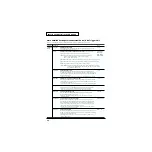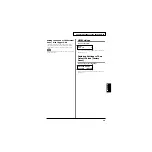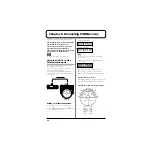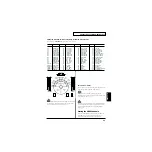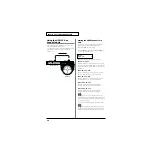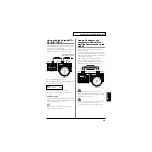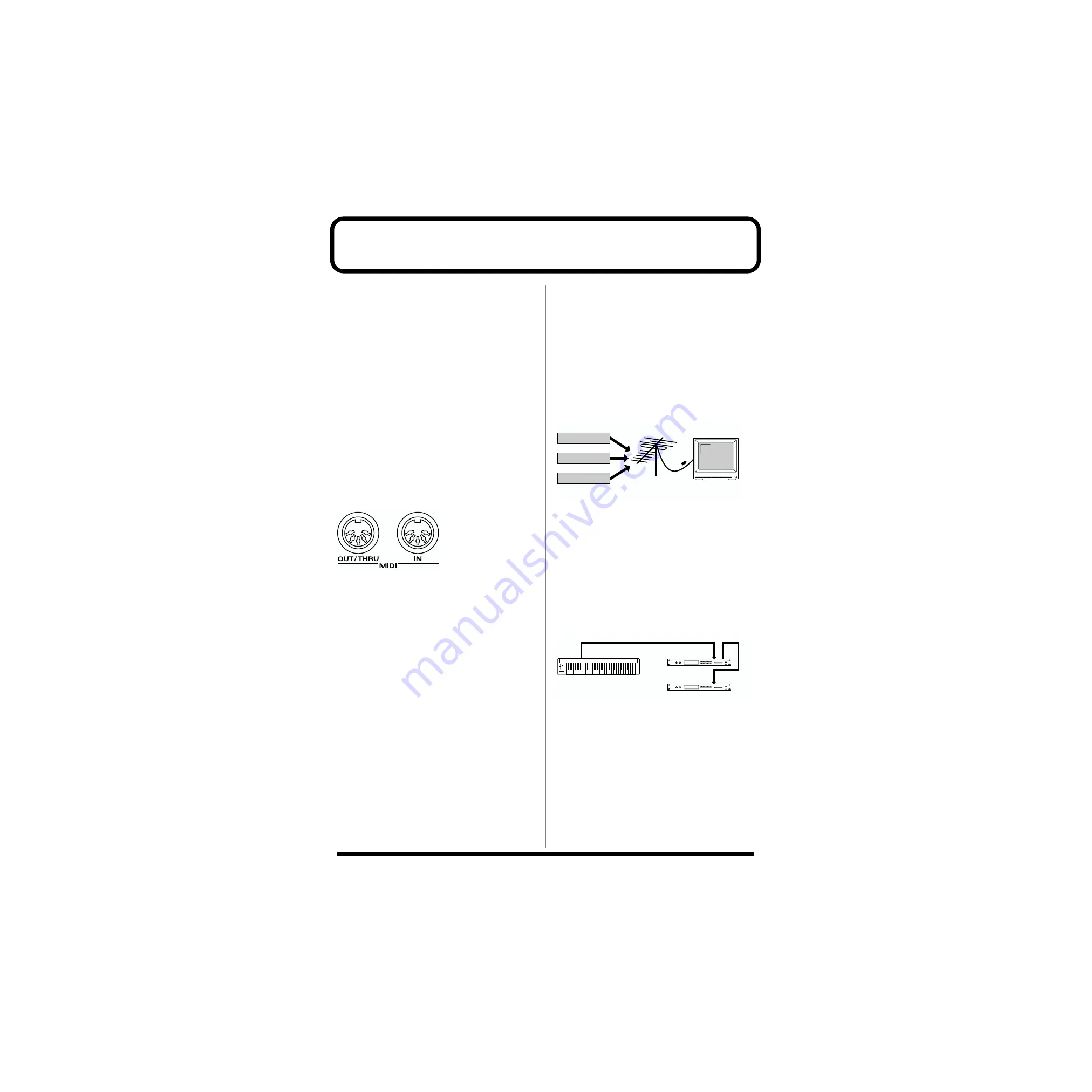
88
About MIDI
MIDI (Musical Instruments Digital Interface) is a standard
specification that allows musical data to be exchanged
between electronic musical instruments and computers.
MIDI With a MIDI cable connecting MIDI devices that are
equipped with MIDI connectors, you can play multiple
instruments with a single keyboard, have multiple MIDI
instruments perform in ensemble, program the settings to
change automatically to match the performance as the song
progresses, and more.
While using only pads with the HPD-15, there is no need to
have any detailed knowledge of MIDI. For those who wish to
use MIDI keyboards to record patterns on the HPD-15, use it
as a sound module with external sequencers, or learn the
HPD-15 at a more advanced level, the following explains
such matters related to MIDI.
About MIDI Connectors
The HPD-15 is equipped with the two types of MIDI
connectors, each which works differently.
fig.7-24
MIDI IN Connector
This connector receives messages from external MIDI devices
(keyboards, sequencers controllers etc.) to play the HPD-15’s
instruments or change its settings.
MIDI OUT/THRU Connector
The HPD-15 uses both the MIDI OUT and MIDI THRU
connector are combined. The “Soft Thru” setting (p. 79)
changes the function. As shipped from the factory, this is set
to “Soft Thru OFF.”
Soft Thru OFF
This connector transmits MIDI messages to external
MIDI devices. MIDI messages received at MIDI IN are
not transmitted.
Soft Thru ON
HPD-15’s MIDI messages and MIDI messages received
at MIDI IN are transmitted from this connector.
MIDI Channels and Multi-timbral
Sound Sources
MIDI transmits many types of data over a single MIDI cable.
This is made possible by the concept of MIDI channels which
allow a device to distinguish the data that is or is not
intended for it. In some ways, MIDI channels are similar to
television channels. By changing the channel on a television
set, you can view the programs that are being broadcast by
different stations. In the same way, MIDI also allows a device
to select the information intended for that device out of the
variety of information that is being transmitted to it.
fig.7-25.e
MIDI uses sixteen channels; 1 through 16. Set the receiving
device so that it will receive only the channel that it needs to
receive.
Example:
Set MIDI keyboard to send Channel 1 and Channel 2, then set
sound module A to receive only Channel 1 and sound
module B only Channel 2. With this setup, you can get an
ensemble performance, with, for example, a guitar sound
from sound module A and bass from sound module B.
fig.7-26.e
When used as a sound module, the HPD-15 can receive on
up to five of the sixteen MIDI channels. Sound modules like
the HPD-15 which can receive multiple MIDI channels
simultaneously to play different sounds on each channel are
called “multi-timbral sound modules.”
The cable from the antenna carries the TV
signals from many broadcast stations.
The TV is set to the channel of the station
you wish to watch.
Station B
Station A
Station C
MIDI OUT
MIDI IN
MIDI THRU
MIDI IN
Receive channel: 1
Receive channel: 2
Sound
Module
A
Sound
Module
B
Transmit channel: 1, 2
MIDI keyboard

